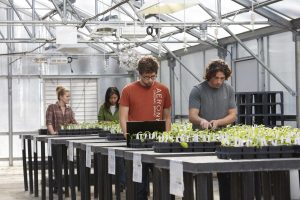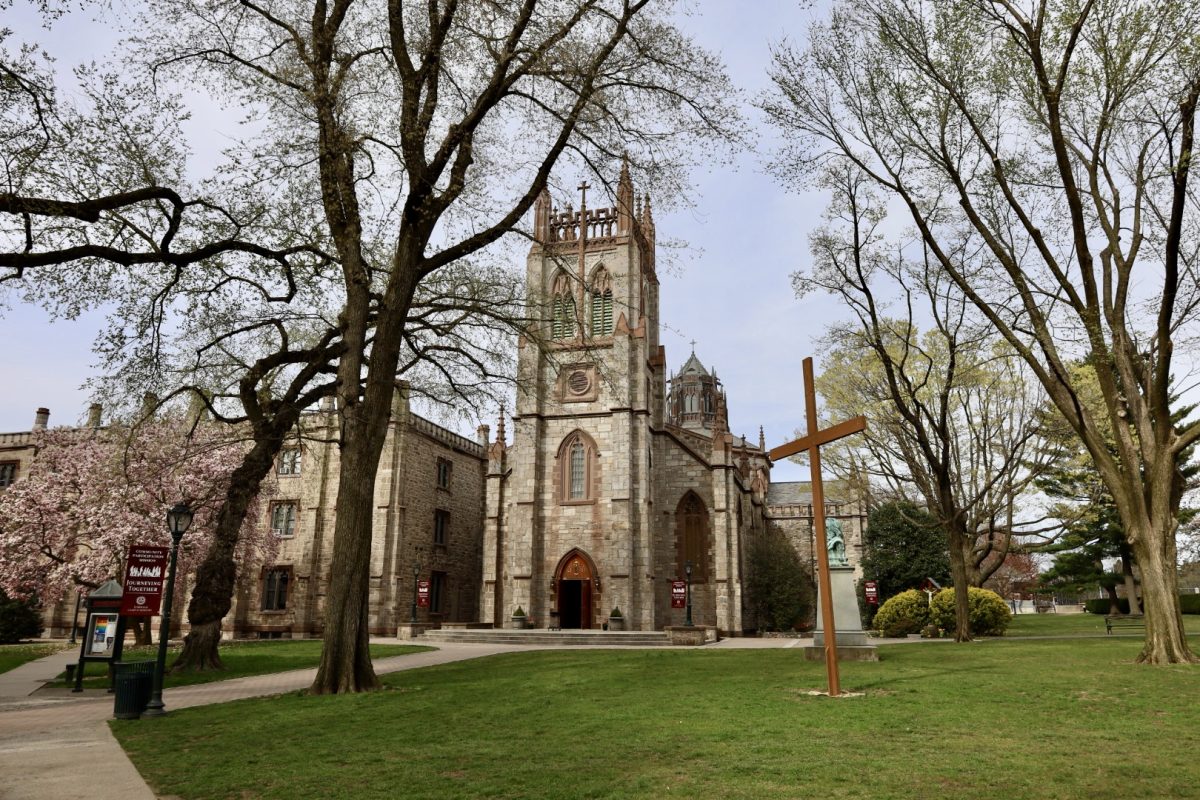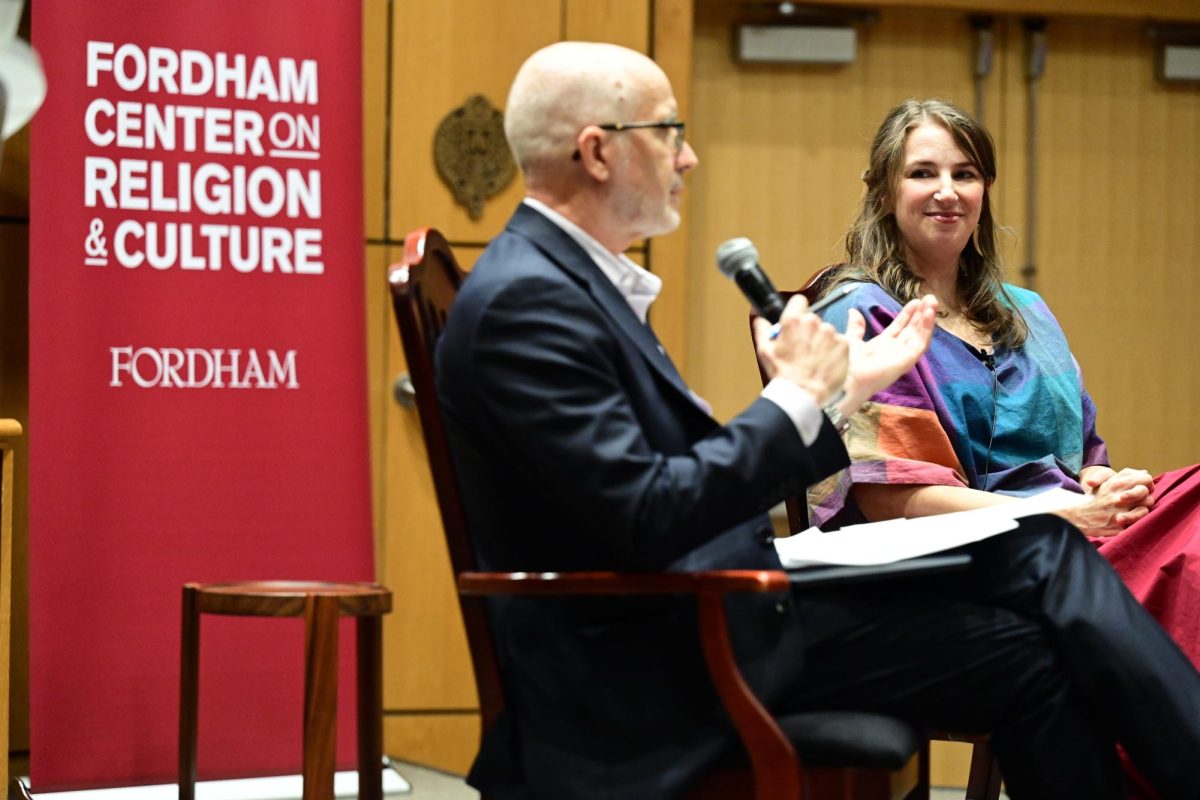By Julia Rist

While some students spent their summer soaking up the sun, others were knee-deep in wildlife. Conor Gilligan, GSAS, a second year M.S. student in the biology department, is one such person. He is a research mentor at Project TRUE, a program that allows New York City high school students to take part in urban ecology field research.
Gilligan said this program is important for a number of reasons.
“I joined Project TRUE because the program enables high school and undergraduate students to view New York City’s green spaces through a scientific lens,” Gilligan said. “The program gives us the chance to underscore that while our parks serve us recreationally, they can also function as pedagogic tools – enabling us to observe and record ecological relationships within an urban setting.”
Project TRUE is a partnership between Fordham University and the Bronx Zoo. It is a tiered mentorship system; Fordham professors mentor undergraduate and graduate students, who in turn mentor high school students.
Gilligan was responsible for overseeing five FCRH undergraduates. These students each advised three high school students. Gilligan said over the course of the summer they researched a variety of fields, from testing the water quality in the Bronx River to looking at eel size and abundance.
Emma-June Orth, FCRH ’19, studied locations of eels in the Bronx River and whether there was a correlation between location and size. Gilligan, who oversaw the research, said that there were a lot of factors to take into consideration while conducting the study.
“Emma-June deployed eel mops in the Bronx and Hutchinson rivers; eel mops are devices made of bundles of frayed rope, which are weighed to the bottoms of rivers,” Gilligan said. “Eels are attracted to this filamentous substrate and nestle among its fibers, which provides them with temporary shelter. She checked the mops weekly for eels, counted them and measured each of their lengths.”
Orth found that there was a size difference between eels that live above dammed areas and eels that lived below. Gilligan said Orth also found a difference between how many eels actually lived in those areas.
“Eels were, on average, more abundant below dams than above dams,” Gilligan said. “These data suggest that damming possibly impedes the migration of mature American eels.”
Maye Yassin, FCRH ’19, observed the relationship between canopy cover and bat activity in the Bronx Zoo as a part of Project TRUE.
Gilligan said that Yassin had a tough job ahead of her when trying to distinguish one bat from another in her research.
“Maye used ultrasonic acoustic recorders to passively monitor bat species richness and activity levels. In order to echolocate, each bat species produces sound waves of a specific frequency; different species emit different frequencies,” said Gilligan. “Using a software called Kaleidoscope, Maye was able to differentiate among the species.”
Yassin’s study found that there are more bats in areas where there is a low canopy coverage.
Gilligan also oversaw Nora Kuka, FCRH ’20, in her research endeavors. Kuka examined the relationship between vegetation and small mammal diversity in the Bronx.
Gilligan said Kuka had to use track tubes in order for the small animals to leave evidence of their tracks behind. Track tubes are a special kind of tube that small mammals can climb into from both ends. The bait is placed in the middle of the tube, and a special type of paper is placed throughout the tube.
“The animals’ inky tracks are deposited on the contact paper, which allows researchers to identify them to the species level,” said Gilligan. “She also used a transect tape and quadrats to assess the composition and abundance of vegetation at her study sites.”
Kuka found that the number of mammals in a specific area is highest when there is a medium amount of vegetation coverage.
Gilligan said despite the success of the student researchers, conducting research over the course of the summer still posed some challenges.
“When doing surveys along the river, we would often get caught in the thick, silty mud and have to squirm our way out of our waders,” said Gilligan. “One of our team members contracted Lyme. Poison ivy, mosquitos and biting flies were ubiquitous features of the forest.”
Gilligan said he hopes that Project TRUE shows high school students that research can be much more than an academic obligation; it can be fun too.
“I hoped that the program underscored the reality that there are myriad paths to having a future in the sciences; one does not need to spend 40+ hours per week in a windowless, fluorescently lit laboratory to be called a scientist,” Gilligan said.













































































































































































































